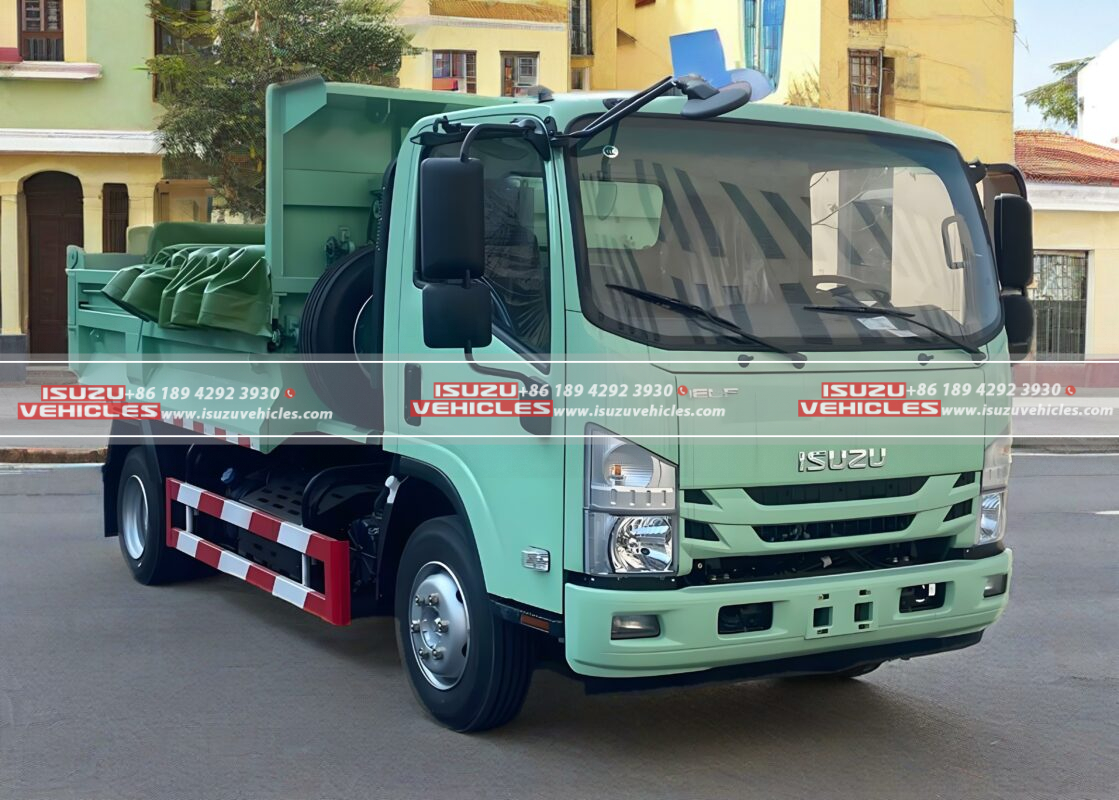Dawn fractures over the shattered concrete of Avenida Libertador as the first ISUZU Dump Trucks rumble into La Bandera construction site, their titanium-reinforced beds loaded with 18 tons of Andean gravel destined for the collapsed Guaire River viaduct. This fleet—the vanguard of a $53 million pact between ISUZU China and Consorcio Reconstrucción Nacional—signals Latin America’s most ambitious urban rebirth project since the 2010 Haiti earthquake. Engineered to survive Venezuela’s extreme topography and supply-chain volatility, these machines are more than earth-movers: they are metabolic engines resuscitating a capital starved for hope.
Anatomy of Collapse – The Infrastructure Emergency Demanding Industrial-Grade Solutions
Caracas’ decay represents a perfect storm of geological, economic, and systemic failures:
Geological Warfare
- Catastrophic Erosion:
Hillside settlements like Petare suffer monthly 1.5-meter land subsidence during rainy seasons, collapsing sewer lines and buckling roads. Conventional trucks couldn’t ascend 32° mud-slicked inclines after storms. - Material Scarcity:
With local concrete supplies contaminated by saline groundwater, trucks now haul certified aggregates from Aragua quarries 120km away—a journey where engine overheating crippled 40% of legacy fleets during 2024’s heat dome.
Humanitarian Logistics
- Water System Paralysis:
The Tuy I aqueduct’s collapse left 4.2 million residents rationing water, requiring 14,000 cubic meters of reinforced concrete for emergency repairs under UNESCO oversight. - Energy Grid Fragility:
Substation foundations near El Ávila National Park required 9,500 tons of earthquake-resistant backfill—a volume impossible to deliver without high-altitude torque mastery.
ISUZU’s mandate fused avalanche-grade durability (-15% gradient stability), fuel-agnostic engines (compatible with Venezuela’s PDVSA low-octane gasoline), and cyber-secured telematics to deter hijackings along Highway 7’s “bandit corridors.”
ISUZU’s Earth-Shifting Arsenal – Engineering Resilience into Every Component
These dump trucks are kinetic fortresses built for Venezuela’s “triple-threat” environment:
Terrain-Domination Powertrain
- Torque Intelligence System:
AI-calibrated traction control redistributes power among six wheels when traversing unstable slopes, deploying hydraulic downforce during El Llanito’s mudslides. Adiabatic turbochargers maintain 420hp output despite oxygen-thin altitudes at 1,400m. - Corrosion Warfare:
Salt-spray armored undercarriages with zinc-nickel alloy plating resist acidic mud in coastal worksites, while ceramic-coated exhausts withstand sulfur-rich air from Vallecito’s asphalt plants.
Operational Cortex
- Autonomous Load Optimization:
LiDAR volumetric scanners auto-calibrate payload distribution to prevent rollovers when dumping near unstable cliffs—critical for rebuilding the Caracas-La Guaira highway clinging to cloud forests. - Anti-Sabotage Protocols:
Biometric ignition locks and GSM-jammer resistant GPS track trucks through Caracas’ signal-dead zones, with emergency cement-dumping capabilities to immobilize hijacked vehicles.
The Reconstruction Ecosystem – Synergy Beyond Earthmoving
ISUZU’s dump trucks anchor a multi-vehicle renaissance machine:
Vertical Infrastructure: ISUZU Bucket Truck Integration
- Grid Resurrection:
ISUZU NKR55G Bucket Trucks with 28m dielectric booms repair 115kV transmission towers in El Cafetal’s avalanche zones. Their hydraulic outriggers stabilize on 35° slopes where conventional lifts toppled. - Historic Restoration:
Bucket fleets restore colonial facades in Barrio San José using laser-guided masonry arms, replicating 18th-century plasterwork without scaffolding delays.
Urban Metabolism: ISUZU Garbage Truck Deployment
- Debris-to-Resource Conversion:
ISUZU FRR Garbage Trucks fitted with magnetic separators salvage 12 tons/hour of rebar from demolition sites for recycling into new bridge reinforcements at Parque Central. - Sanitation Surge:
Post-landslide, garbage trucks cleared 600 tons of debris from San Agustín in 72 hours using high-compaction crusher beds, reopening access for dump fleets delivering emergency slope reinforcements.
As twilight stains the Cordillera de la Costa crimson, an ISUZU dump truck deposits its final load at the Bello Monte metro station rebuild, its suspension sighing under the weight of basalt aggregates bound for anti-seismic foundations. Nearby, bucket trucks extend toward damaged high-tension wires while garbage trucks vacuum hurricane debris from storm drains. For engineer Carlos Mendoza, who witnessed the 1999 Vargas tragedy, this fleet transcends machinery—it’s Venezuela’s covenant with its own survival. Where erosion and decay once defined Caracas’ skyline, ISUZU’s engineered resilience now pours the foundations of resurgence. The trucks’ tire grooves etching fresh patterns onto century-old avenues aren’t mere tracks—they are topographic signatures of a nation rewriting its destiny.
